ABSTRACT:To develop continuing education inChina,TsinghuaUniversitybuilt its remote education system in 1997. In the past nine years, this system has served about 30,000 students all overChina. Now, this system provides educational resources for two kinds of students: group users and individuals. Due to the large land area and uneven communication and network status among different areas,TsinghuaUniversitybinds satellite and other network technologies to build its remote education technical system. This system makes full use of the advantages of the satellite and the network technologies to build a loop e-learning environment. Some key details are discussed in this paper.
Key Words: Continuing Education, Remote Education system, Group Users, Individual users, Satellite IP Data Broadcasting System
Wu Gengsheng,Prof., Vice president,SchoolofContinuing Education,TsinghuaUniversity,Beijing, P.R.China
Liang Zhaohui,Deputy Director, Remote Education Technology Center, School of Continuing Education, Tsinghua University, Beijing, P.R.China
Xu Linqi,Remote Education Director,School of Continuing Education, Tsinghua University, Beijing, P.R.China
Life-long Education and Public Education is the two main social factors that give birth to the Distance Education. The benefits of the Distance Education are: the location flexibility for instructors and students, fewer influences on normal work and family life, and lower cost [1]. Due to the large population,Chinais very short of educational resources. Therefore, there is a great demand for Distance Education with the limited educational resources provided inChina.
In 2003, the number of those who took part in the National College Entrance Examination is about 6 million, but only 3.8 million of them went to college. In 2006, the number grows up to 9.5 million and 5.3 million (see Fig. 0 ) respectively. So there is a large number of young people who cannot get college education as they wished. On the other hand, more than 2 million students graduate from college every year. In 2006, this number is estimated about 4.13 million. They also need continuing education to face the challenges from their new jobs. This is a big market as well as a great duty for remote education.
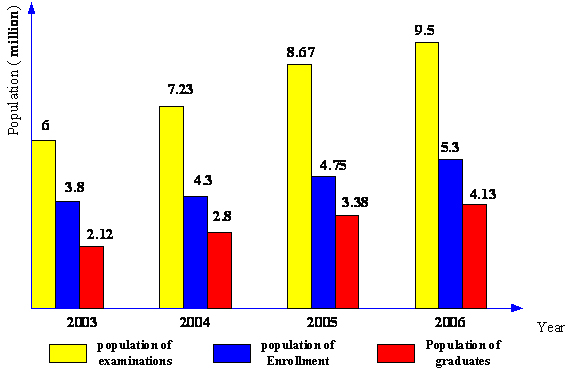
Fig. 0 Population forNationalCollegeEntrance Examination and Graduates from College
So in February of 1996, Mr. Wang Dazhong, the president ofTsinghuaUniversity, put forward thatTsinghuaUniversityshould make full use of the abundant educational resources and modern communication technology to develop modern distance education. Approved and supported by the Ministry of Education,TsinghuaUniversity’s Modern Distance Education was put into practice from 1997. Till now,TsinghuaUniversityhas built more than 300 sub-stations all overChina, 102 of them are help-poverty stations and mainly in the west part ofChina.
TECHNICAL SYSTEM
The distance education is closely linked with the development of communication technology. From Correspondence Education to the TV Education, the communication technology plays a great role in the development of distance education. The modern distance education is just based on the modern communication and networking technology. It provides teaching and real-time interaction between teachers and students who are in different places.
In order to build an efficient, modern and advanced technical system for remote education,TsinghuaUniversityused several famous universities’ distance education system for reference and analyzed the character of remote education students. The students of remote education inChinacan be divided into two kinds: group users and individual users. The group users, mainly the workers or employees in factories or companies, often learn one course at the same time and care more about the classroom atmosphere and the interactive effect; the individual users, mainly those without any working experience, have different individual interests and care more about learning without location limits. To the group users, a system with the satellite technology as the core technology is built up. To the individual users, a system built on the Internet is provided.TsinghuaUniversityuses a managing system to combine these two systems into one integrated system (see Fig 1).
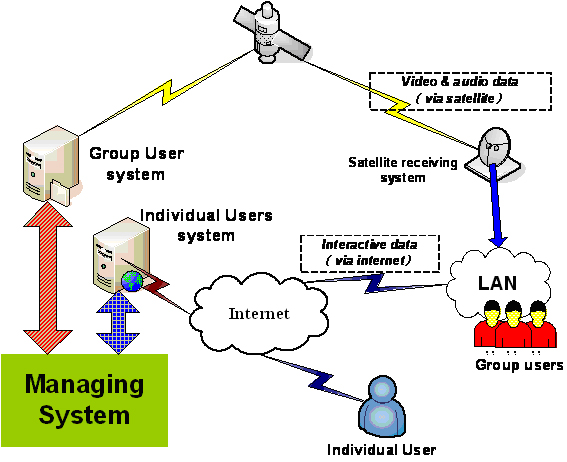
Fig.1 The technological system of Tsinghua University Distance Education
Group-users System
The group-users system serves mainly those users with working experience to improve their professional capability. The system for group users must provide such learning conditions:
l High-quality video & audio effect;
l Uninterrupted video and audio;
l Convenient interactive environment and effect;
To fulfill these conditions,TsinghuaUniversitydesigned a system using the satellite as the core technology, as shown in Fig.2.
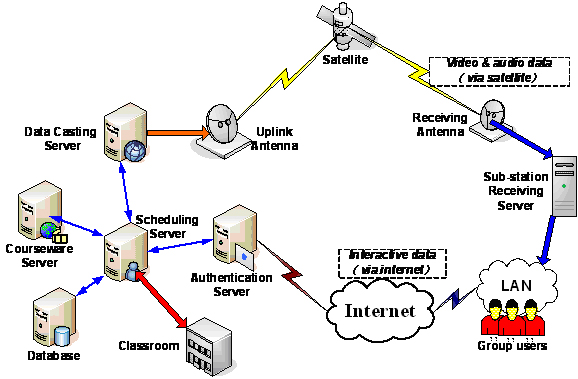
Fig.2 The group-users system of Tsinghua University Distance Education
China is a country with large area and uneven technology levels. In order to provide the students with fluent and high-quality video and audio effect, the digital IP broadcasting technology via satellite is used in this system. High-bandwidth video and audio data is broadcasted to learning centers. The data is received by the receiving antenna system and transferred into the LAN of the learning center. The group users can learn these data in classrooms or computer rooms of the learning centers. Except for bad weather such as raining and snowing, the data-broadcasting channel is smooth without network congestion. The receiving effect can not be affected by the increasing or decreasing number of students. Thus the High-quality and uninterrupted video and audio conditions are fulfilled.
Another keyword of the group-users system is closed-loop. As shown above, the satellite data broadcasting is one-way, but the two-way satellite system costs a lot of money. In order to form a closed-loop of learning system, the group-users system uses the Internet as the return channel of the information from the users. Generally, such kind of information flow is light. So, the large flow of course data is transferred through the satellite channel and the light flow of interactive data is returned via Internet. The interactive data from users is collected from Internet by the system. Wide Band of most learning centers is good enough to fulfill this purpose.
The core server in the group-users system is the Scheduling Server, which connects and manages the other servers in the system. The Authentication Server is in charge of validating the authentic information and interactive data from the users. Then the Scheduling Server handles the users’ demands and directs commands to corresponding servers.
The Courseware Server is in charge of two parts: courseware real-time generation and courseware broadcasting. The courseware real-time generation system can generate courseware at the same time with the classes. The teacher gives lessons in the live-broadcasting classroom while the courseware real-time generation system samples real-time video and audio signals and the computer screen of the teacher into one digital IP courseware data stream. This live data stream is broadcast through the Data Casting server to the satellite. This is the live broadcasting mode. As soon as the class is over, the courseware is generated. In the scheduled broadcasting mode, the courseware broadcasting system can play back courseware according to curriculum program and cast courseware into broadcasting or multicasting data stream.
Several data stream of different courses can be transferred to the Data Casting Server according to the Scheduling Server’s order at the same time. The Data Casting Server controls several IP data streams and assigns them in different channels and then transfers them to the up-link antenna system.
These servers make up the main station part of group-users system. It is in charge of directing, sampling, editing, producing and transmitting of the instructional program. In the group-users system, students learn at the sub-stations or learning centers.
At the sub-stations or learning centers, the Sub-station Receiving Server uses the receiving PCI card to picks up the DVB packets containing IP data from the DVB stream and re-assembles them into their original IP data format. Then the IP data is transferred to the LAN.
The students in the LAN of the sub-stations firstly log on the homepage via Internet with their own usernames and passwords. If they pass the authentication, they can access the virtual classroom containing the courses they have selected. When they select the virtual classroom, they can watch the courses that are transmitted from the satellite into the sub-station’s LAN on their own computer. If the students have any questions, they can use Internet to interact with the teaching assistant at the main station. The teaching assistant then transfer the questions collected to the teacher. This forms a feedback loop for teaching and learning. The teacher can know how his students understand his class and thus adjust his teaching. This system utilizes the satellite’s advantage of huge content delivering and the Internet’s advantage of low cost and being easy to use. If the users fail to pass the authentication, they can no log into the virtual classroom to learn. In this mode, the copyright can be protected well.
Individual-users System
The characters of individual-users mainly include scattered learning location, uncertain studying time and different individual learning interests. The individual-users system must satisfy these characters. So the purposes of individual-users system are:
l Anywhere, extensive distribution;
l Anytime, accessibility
l Fluent audio & video
To fulfill these purposes, the Internet technology is selected to form the individual-users system. The core technology in individual-users system includes:
l Distributed server system
l Digital IP Data delivering System
Centralized server system is unsuitable for the individual-users system. With the number of accesses increasing, the bandwidth will be used up quickly. This situation is almost like the traffic problem, no matter how wide the road is, more and more vehicles always cause traffic jams. Centralized server system often fails for network congestion. At the same time, there are several ISP network systems inChina. The interconnection between these ISPs is not so good. So, Tsinghua designed a distributed server system to overcome these problems (See Fig.3).
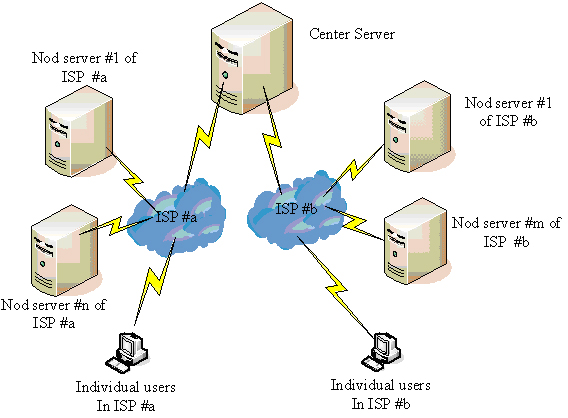
Fig.3 The distributed servers system of Tsinghua University Distance Education
The Center Server is the core server of the distributed servers system. It is in charge of managing, validating and directing of the system. Nod-servers are placed in different ISP’s networks. The number of nod-servers placed lies on the number of students in the same ISP’s network. Every nod-server serves no more than 10,000 students as the upper limit. The Center Server adjusts the number of nod-servers dynamically according to the students’ location and the courses they selected.
The students’ validating information is placed only on the Center Server. A student logs into the Center Server firstly. If he passes the validation, he will see the courses he has selected and paid. When he clicks the course he wants to learn, the Center Server does not provide the courseware to him directly. The Center Server directs the courseware linkage to the nearest or the most fluent server to the student. Only the data part of the courseware is stored in nod-servers. Without the validating and management part data stored in the Center Server, these data cannot serve the students alone. Controlling the Center Server firmly, copyright can be protected very well in this mode.
The courseware data stored on nod-servers is tremendous. In order to synchronize data in different servers and transfer new courseware data to nod-servers, the Digital IP Data Delivering System is built up (See Fig.4).
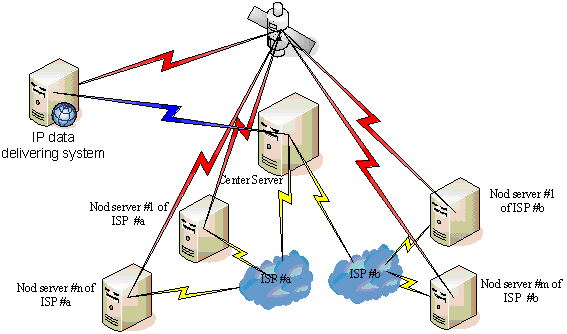
Fig.4 The Digital IP Data Delivering System ofTsinghuaUniversityDistance Education
Every day, the Center Server calculates the course selection from students and forms a courseware list for delivering. This courseware list will be transferred to the IP data delivering system. The IP data delivering system forms a schedule and utilizes the unoccupied channel of satellite to delivery the courseware data. The courseware data is sliced into small packages. These packages queue automatically to be transferred to the satellite. The nod-servers all overChinareceive courseware from the satellite. Every nod-server reports its rate of receiving progress and the receiving details of packages. Because the satellite delivering is one-way, some packages are lost during the progress. A receiving Ratio is set by the IP data delivering system. When one nod-server reaches the ratio, it will stop receiving data from the satellite and change to Internet for complementing the lost packages with the permission of the IP data delivering system.
The Internet-based Educational Administration System
In addition to the systems discussed above,TsinghuaUniversityalso built up an Internet-based educational administration system. The Internet educational administration system is used to handle distance educational activities such as informing students, collecting students’ assignments, students’ email server, and so on.
At the website, there is also a virtual classroom where the students and teachers can discuss with each other via BBS or email system. The students can also download their curriculum schedule, check their own achievements and progresses, do some examinations and utilize the courseware.
The Sub-station or learning center
The sub-station or learning center is in charge of recruiting students, organizing classes, providing technical support, etc. (see Fig.1). The mainly technical system of sub-station includes:
l the DVB receiving system
The sub-stations receive DVB programs via its DVB receiving system and use them to organize class in multimedia classroom.
l the IP data broadcasting receiving system
The sub-stations connect the IP data broadcasting receiving system to their intranet or CATV network. The courseware is saved in their own LAN Server.
l the instructional interaction system
Via the instructional interaction system, the sub-stations organize the students to interact with the teachers in class.
The sub-stations provide group users with modern multimedia classrooms and local assistant teachers. Many of them have their own LAN and almost all have Internet access. They are the front parts ofTsinghuaUniversity’s remote education system.
CONCLUSION
Technology plays a important role in modern distance education but not the only one. A successful technology system must be economical, suitable for learning mode and easy to use. There are also several problems that have not been overcome inTsinghuaUniversity’s system. One problem is how to make a wonderful interactive environment for the teacher and his students to communicate easily. The other is how to take experiment in distance education system. Till now, some courses are difficult to carry out in distance education mode such as oral English, art courses like painting and sculpture, engineering and so on. Maybe in the future, more and more new technologies introduced to distance education can help to solve these problems.
We are paying more attention to these technologies:
l multimedia technology, especially the video and audio CODEC technology that could help to deliver higher quality courseware to the students in distance education via limited bandwidth.
l network technology, such as desktop videoconferences over Internet at low cost of bandwidth can help the students interact with their teachers and classmates conveniently, and wireless network can provide more convenient access to the distance education.
l database technology and knowledge-base system technology. In distance education, the students cannot get information easily as the students in normal universities, for there are not so abundant data in their library. So in the future we will build a distance educational library for the students.
l virtual reality technology[2], may help to solve the problem of courses with experiment. For the students have to do experiment whereas we cannot provide them with so many facilities and instructions as in normal universities.
Now, most students learn in sub-stations. We should aim at making all the students learn at home in the future. We should try our best to provide the students more convenient environment in future distance education.
REFERENCES
[1] Lisa Neal, Virtual Classrooms and Communities. ACM GROUP ’97 Conference. November 16-19, (1997)
[2] Wu Gengsheng, Zhang Ying, Dou Jian, Distance Learning inTsinghuaUniversity. Proceedings of the International Conference on Distance Education, Distance Learning and 21th Century Education Development. April 12-15, (1999)
